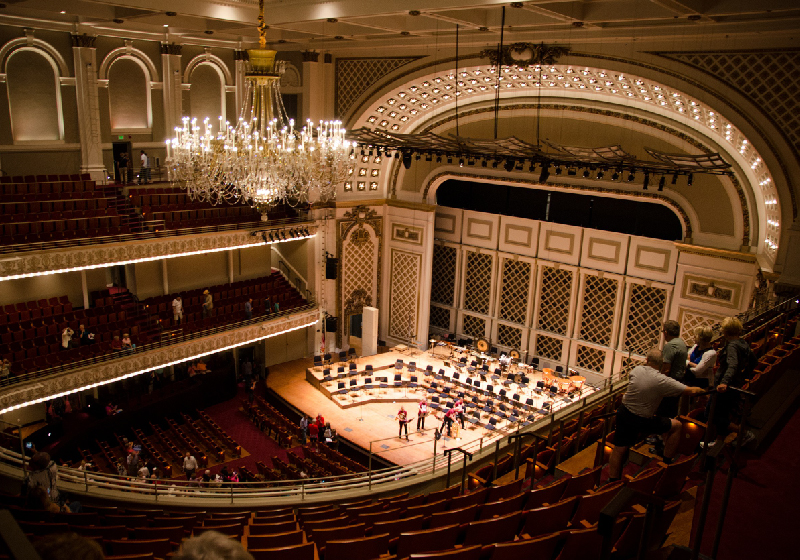Location: Cincinnati, Ohio
Architectural Style: Venetian Gothic, Victorian Gothic Revival Style
Built: 1878
“It’s alive!”
The leaves are changing, there’s a haunting chill in the air, and spookiest of all, our Haunted Places series has been resurrected! We’re loaded up for another road trip to some of the most paranormal places across the United States and Canada. Our first stop plays host to one of the oldest baseball teams, world-class chili, Steven Spielberg, and plenty of ghostly citizens–you guessed it, it’s “The Queen City” AKA Cincinnati!
The Elaborate Cincinnati Music Hall
It comes as no surprise that a city as historically rich as Cincinnati has a building to match. The Cincinnati Music Hall was built in 1878 to replace the older temporary Exposition Hall. Funding for the Music Hall was started by the affluent Reuben R. Springer, who campaigned for donations from other citizens and socialites. Designed by Samuel Hannaford, Music Hall stands as one of the last Venetian Gothic buildings that were part of the Victorian Gothic Revival Style.
Music Hall has been the home of the Cincinnati Ballet, Symphony Orchestra, Opera, May Festival Chorus, and the Cincinnati Pops Orchestra. It also served as the main convention center for the city until the 1970s. A who’s who of historical figures have been spotted at Music Hall throughout the years. Names such as Ulysses S. Grant, Theodore Roosevelt, and Dwight D. Eisenhower have held public addresses and political rallies within the Hall.
Of course, it wouldn’t be “Music Hall” without numerous talented musicians taking the stage as well. Frank Sinatra, Johnny Cash, Richard Strauss, Alexandre Guilmant, and even the Grateful Dead have stood in the spotlight of Music Hall. In 1975, Music Hall received the title of a National Historic Landmark by the U.S. Department of the Interior.

Photo by Larsonj3, licensed under CC BY-SA 4.0
Music Hall Today
After undergoing several renovations throughout the years, Music Hall now has four main areas:
What Lies Beneath
So how does a building so elegantly crafted garner a dark history? While Music Hall itself hasn’t seen many unfortunate occurrences, the ground it stands on certainly has. Before the construction of Exposition Hall and subsequently Music Hall, there was an old pauper’s cemetery commonly referred to as Potter’s Field. This cemetery was attached to Ohio’s first insane asylum. Then in 1832, cholera ravaged the city and a new “Pest House” was built on the land. Six years later, the steamboat Moselle on the nearby canal experienced an explosion in the boilers. Many of the victims either washed ashore on Potter’s Field or were buried there later. It’s even said that Potter’s Field served as a military hospital during the Civil War.
The Show Goes On
With so many unmarked graves, it wasn’t uncommon to dig up remains during construction and various renovations. In fact, sightings of apparitions go back as far as Music Hall’s opening. Employees and guests alike have told stories about feeling an uneasy presence in the building. Disgruntled voices can be heard in the elevator, you feel as though you’re being followed, and the sounds of past performances echo the halls. You might even see former patrons in ghostly garb making their way to their seats or awaiting the next show.
Caught on Tape
In 2016, local photographer Matthew Zory was taking photos of renovations inside Music Hall. In two of his photos, he captured a dark, mist-like anomaly on camera. The photos have further convinced believers the Music Hall is definitely haunted. Music Hall was also featured on the hit show Ghost Hunters in 2014.
Check Out the Scares Yourself!
Music Hall still holds various events both public and private. Of course, you can go hunt for a haunting with their ghost tours! Just be sure to bring your proton pack.
Don’t get spooked by your new home! Contact National Property Inspections and schedule an inspection today!



